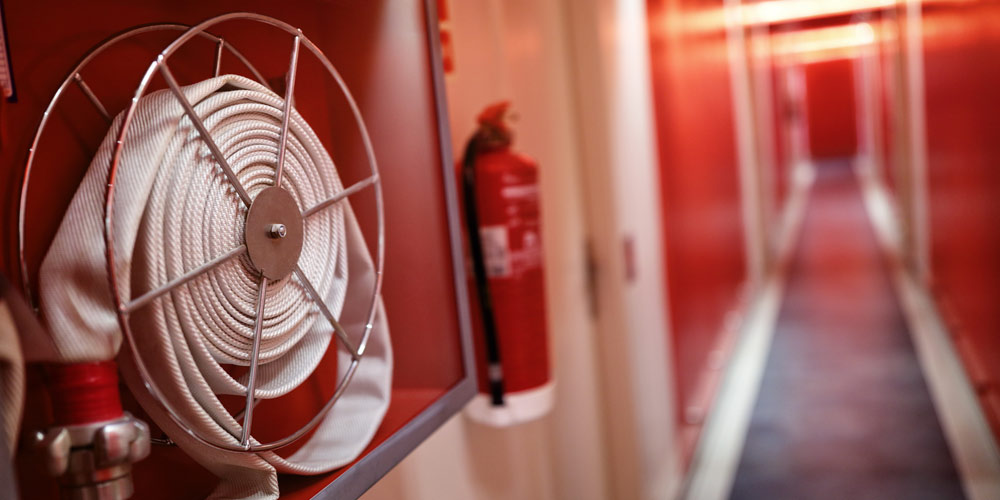Everything You Need To Know About Your Fire Safety Plan

Fires can happen at any moment if you own a car repair shop and the majority of the time you cannot plan for them. They can happen in a blink of an eye, the result of one could be detrimental to your business. With the amount of flammable equipment in a car repair shop – paints, oils, solvents etc – it’s very likely that something can happen. On top of having flammable equipment, you may also have welding services, which will involve a lot of sparks that could get out of control.
In the event of a fire occurring, you need a quick and safe evacuation procedure that ensures everyone in the building can escape. With fire and smoke being able to spread fast, it could leave employees and even customers in dangerous situations, especially if they’re in inescapable locations. That’s why it should be a priority to have an evacuation plan in place.
As the person responsible for finding a solution and making arrangements for the event of a fire emergency, you first need to create an evacuation plan. When you are producing this, you have to consider the various factors relating to your workplace and your employees. So one of the first steps is to carry out a fire risk assessment of your premises. You must observe your workplace by:
- Identifying the risks
- Determining who may be harmed if a fire broke out
- Implement new safety measure
- Reviewing and updating them on a regular basis
Once you have considered these factors for your premises, you can begin to consider what you need to include in your emergency plan.
What Should Be Included In A Fire Evacuation Plan?
When preparing for your fire evacuation plan, you must make the following arrangements to ensure everything runs smoothly:
A fire evacuation strategy
Your employees and local fire authorities need to be alerted of what actions need to be taken if a fire breaks out
Alarms
You need to decide how you are alerting people when there is a fire. Also take into account those who are hard of hearing.
Escape Routes
Provide your workplace with a clear explanation that will instruct people on how to exit the building safely.
Signs
There must be enough signs throughout your premises that clearly show where the routes for evacuation are.
Emergency Doors
The doors you have on your escape route must be easy to open. Incorporate doors that have a push bar.
Fire Alarms
When a fire breaks out, the alarms must be pulled without hesitation. Make your employees aware of where the fire alarms are located throughout the building.
Fire Equipment
Your premises must include plenty of fire extinguishers in easy-to-access locations.
Assembly Point
Make it clear where the assembly points are and instruct your employees to only go there in an event of a fire. A sign or a mark on the floor should indicate where it is.
Roll Call
When everyone is gathered at the designated assembly point, you must have a system in determining who’s present and who’s possibly still in the building.
Implementing these evacuation arrangements for your car repair shop will ensure that people exit the building as quick as possible in a safe and orderly manner.
Your evacuation plan must be as clear as possible and you must show to any safety inspector that you are well prepared for the situation. One of the more vital things that you must show is that you’ve created a clear, unobstructed passageway to all escape routes. This includes corridors, doors, and staircases must not be blocked by any means. Your escape routes must also be well signposted. They must be clearly marked and lead to a safe location on your premises. Ensure that they are as short and direct as possible so it’s simple for your employees to understand when things are becoming turbulent.
On your premises, you must make sure that there are enough exits and exit routes. If a fire breaks out, there’s a chance that certain areas will be best avoided, so having multiple exit points will benefit everyone. People must be able to exit through different areas. If there is one exit, it could become too crowded and become a hazard in itself. Something that can help with notifying your employees of different exit points is having emergency lighting where needed that points them in the direction of exit points and where to access emergency fire-fighting equipment if need be.
On top of having the appropriate exit points for your employees, they must be aware of their roles during a fire, what to do, and what to look out for. Having regular safety training could be the different between your employees being safe and having a lawsuit on your hands. You must train your employees to know what to do if a fire breaks out, inform them where all escape routes are when where the assembly point is.
Something that is also worth considering is appointing a designated fire warden / marshal. Their duty will be implementing certain fire safety measures and have an extensive knowledge of preventing fires, and fighting fires where possible. Sending one of your employees out to train for this could be beneficial for your business and you will be thankful when the time comes (hopefully it doesn’t, but you just never know).
Hang on, I have disabled employees. Surely they’re a higher risk? What shall I do?
Even though your fire safety plan may benefit those who are able bodied, it doesn’t mean that it will benefit those who are struggling with disabilities. While making your plans, you must consider those with vulnerabilities, such as those who are confined to a wheelchair, who are hard of hearing, and visually impaired. Be prepared to create a specially-tailored plan for those who are disabled.
While making a tailored fire safety plan for your vulnerable employees, you must cover every aspect of an emergency evacuation. This includes the following:
- Ensure that your emergency evacuation procedures are easily understandable, which could be remedied by the use of sign language, braille, or large print signs.
- If they are unable to identify the signs that indicate emergency exits and routes, designate an employee to assist them to evacuate the building.
- If they are unable to hear the fire alarm, including the use of visual alarms or a vibrating page will help notify those who are hard of hearing about a fire in the building.
- You may have employees who are unable to use stairways in the event of an evacuation. Again, think about having an employee to assist them or implement ramps to your building to help them get around.
Before you make any arrangements to create a fire evacuation plan for your less-abled employees, have them fill out a form so they can inform you of the particular arrangements they need put in place in order to evacuate safely in the event of a fire.
There’s a lot to take in, but if you carry out these tasks to ensure your workplace is prepared for am outbreak of fire, you’re not only keeping your business safe, but you’re keeping your employees safe, your stock safe, and saving yourself from any lawsuits.

